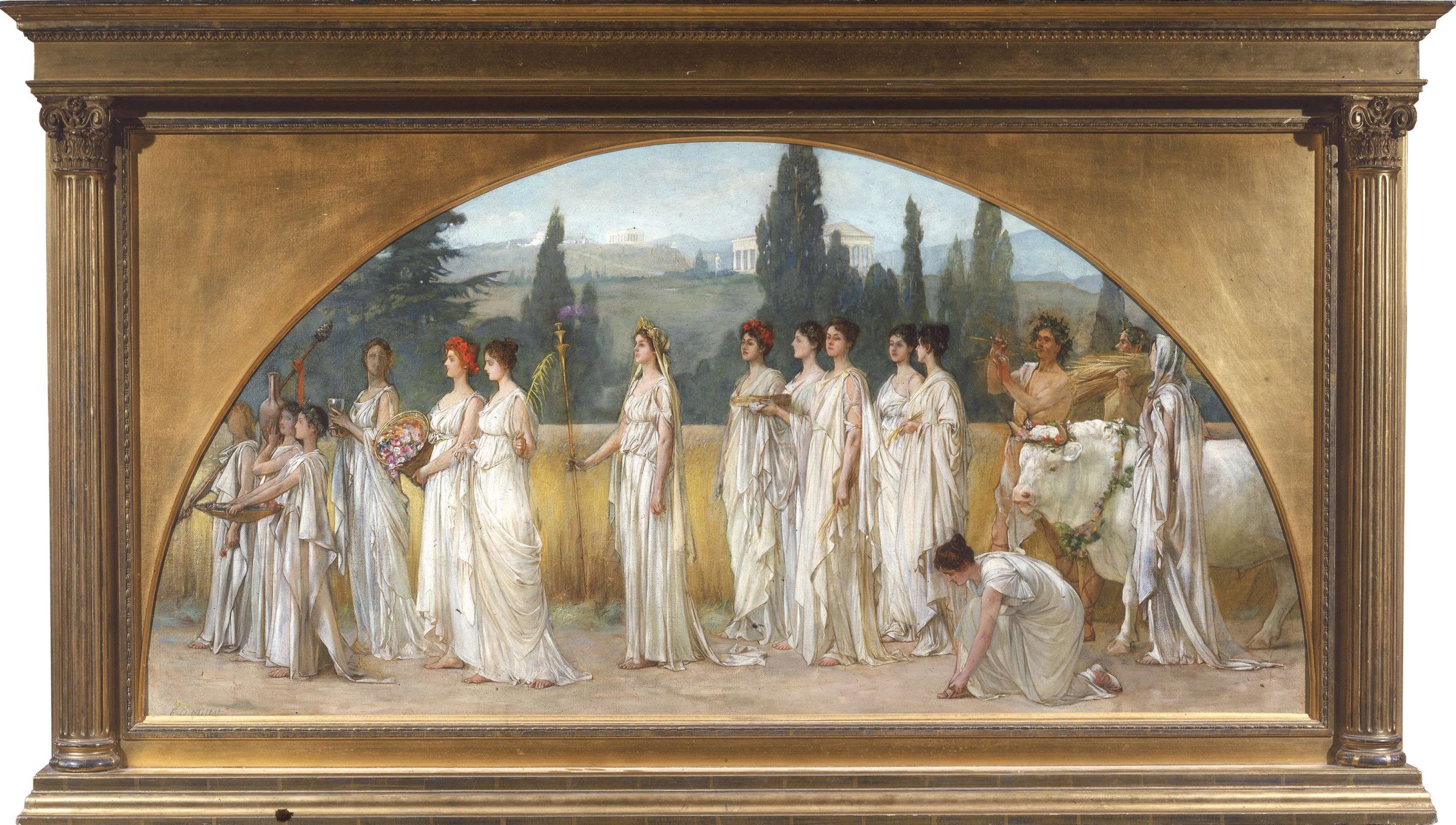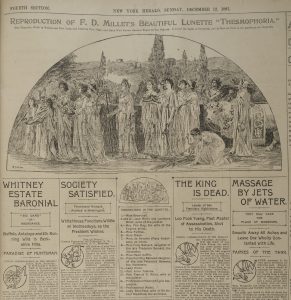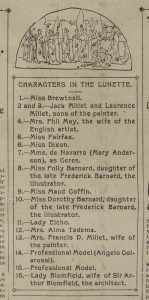
Thesmophoria
Date: 1894-1897
Dimensions: Height: 63.5 cm (25 in.), Width: 137.8 cm (54.25 in.)
Medium: Painting, Study – oil on canvas Mural – oil on canvas, now destroyed
Owner/Location: Painting, Study at Brigham Young University Museum of Art, purchased with funds provided by Ira and Mary Lou Fulton, 2003.
Description
This highlight from the MOA collection is a study for a large mural that once decorated the Bank of Pittsburgh. Sadly the bank has been torn down and the mural was destroyed. However, in the mural Millet depicts a procession of beautiful women in white performing the ancient Greek festival of Thesmophoria—a rite honoring Demeter, the goddess of agriculture. During the late 19th century, the Aesthetic art movement sought to create harmonious, decorative images rendered with an elegant restraint many felt was lacking in Victorian art. Thus, allegorical figures of women in flowing gowns, inspired by classical Greece and Rome, were common motifs in murals created for both civic and commercial buildings. Millet’s painting, and the mural created from it, embraces the classical ideals of America’s founders, who saw the nation as continuing the democratic principles of Greco-Roman civilization. Many Americans who viewed this image saw the white-robed worshippers as a parade of their forebears. An American native, Millet painted this from his English home in Broadway, the Cotswolds. – BYU, MOA
A New York Daily Herald newspaper article from Dec. 12, 1897 announced the installation of the mural in the bank and listed the names of the many widely known socialite women who stood as models for the painting. The adult man listed was often used by Millet as a model for his paintings. The Millet’s were very close friends with all the socialite families, traveling in similar circles in England and America. The following two clips from the paper lists the names of each person in the painting.

December 12, 1897; page 13

December 12, 1897; page 13
Millet’s granddaughter, Joyce A. Sharpey-Schafer, recollected the works created for public buildings such as state capitals. Of the many works created she remembered one in particular and expressed, “One of these I remember vividly, a reproduction of it hung at the top of the stairs in our childhood home. On the way to bed, I would stop and stare at his Thesmophoria.”
Sadly, the Bank of Pittsburg was torn down and with it both Millet’s and Blashfield’s murals were destroyed. This link is to a news article and letter from the Carnegie Library is about the sense of loss that surrounded the loss of the murals at the time. Bank of Pittsburg Thesmophoria
Exhibitions / Provenance
Exhibitions:
Provenance:
Painting, Study at Brigham Young University Museum of Art, purchased with funds provided by Ira and Mary Lou Fulton, 2003.
Literature
Research:
Publications:
Festivals in ancient Greece were essential to the social and political spheres of society. Though 120 days of the year were dedicated to festivals, most were reserved for male-citizens and women were generally prevented from participating.
The Thesmophoria (Θεσμοφόρια) was a unique festival in the ancient Greek calendar, reserved for citizen-wives across the Hellenic world. Though women were not considered citizens in ancient Greece, the wives of male citizens both participated in the rituals of the festival and were involved in the organisation process. Men were prevented from partaking in the rituals and were forbidden from knowing what the Themsophorian rituals entailed. – Hellenic Museum, Melbourne, Australia
